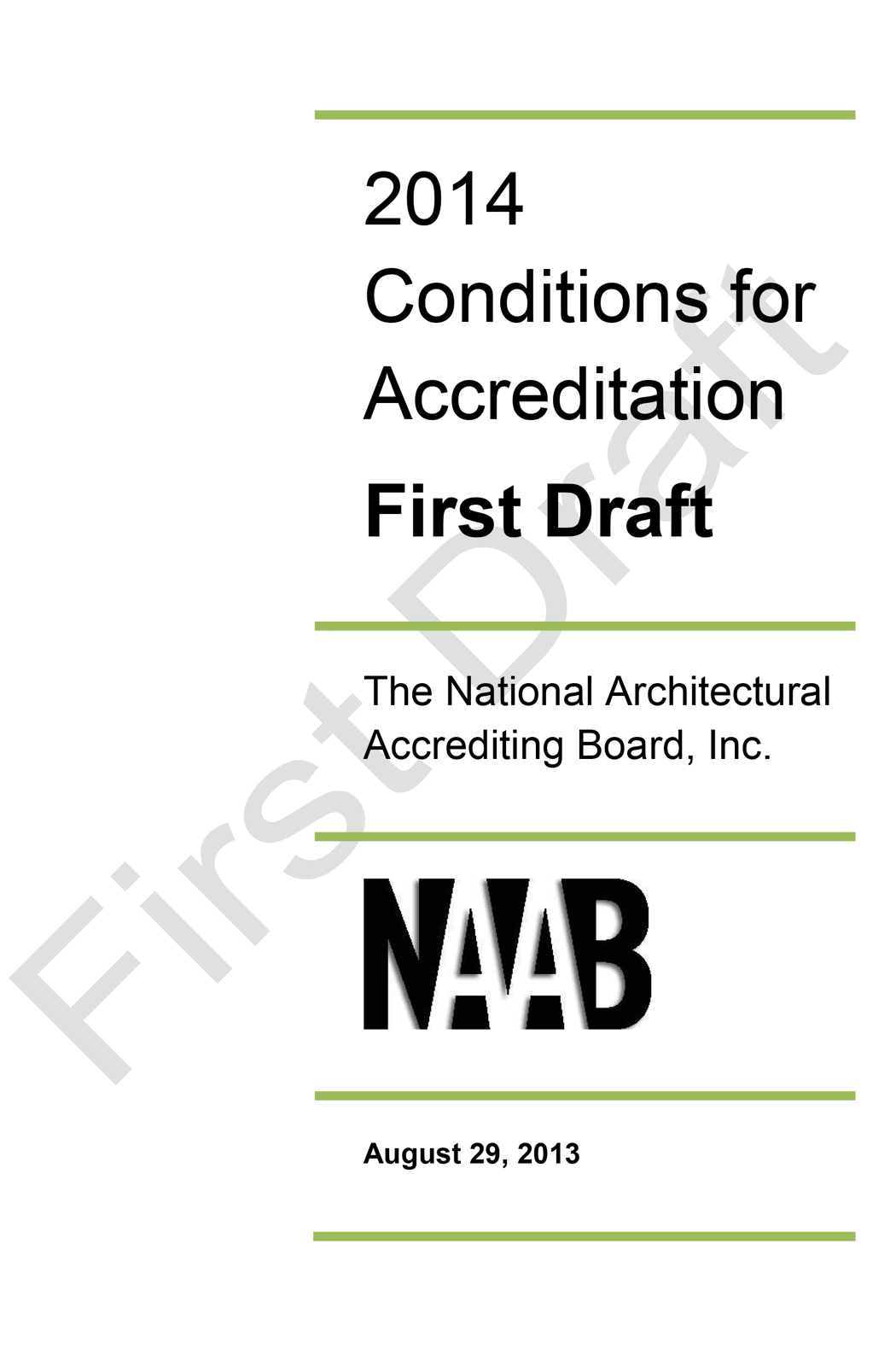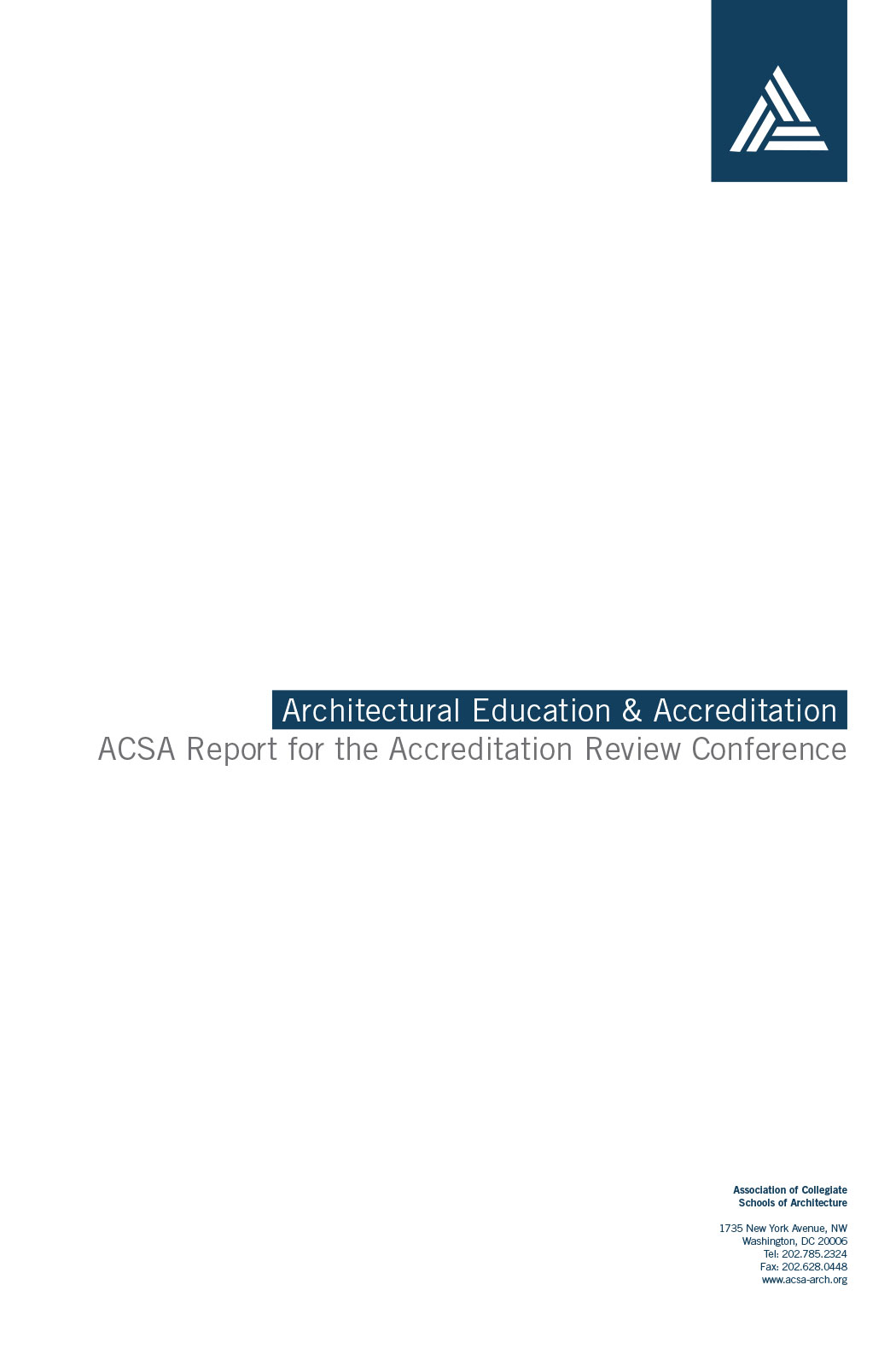By Norman Millar, ACSA President
As we shared a few weeks ago, NAAB recently published new draft Conditions for Accreditation that will affect graduates of schools as far out as 2019. ACSA is developing a formal response to the draft and plans to send out a questionnaire later in October. To help us prepare, we invite you to discuss with your colleagues a number of key issues arising from the Conditions draft.
International Accreditation: Condition II.2.1, Regional Accreditation, would allow schools that do not have U.S. regional accreditation to seek official validation by NAAB. The effect of this seems to allow international programs to seek accreditation. Currently the American University of Sharjah is the only non-U.S. program with accreditation, but because the university holds regional accreditation, it satisfies the current Condition. Presumably, graduates of an international NAAB-accredited program would have access to U.S. licensure processes, although this is not confirmed. How would this change affect architectural schools in North America?
Learning Environments: For the first time, NAAB is acknowledging the existence of online education in architecture. Condition I.2.2, Physical Resources, requires programs to address how “online course delivery” changes space and physical resource requirements. But has higher education moved beyond a binary world of in-person versus online education? Would it be preferable to simply define what an adequate learning environment means, in terms of digital and physical facilities? (Pop quiz: how many accredited online architecture programs can you name?)
Mobility & Flexibility: NAAB continues to try to improve clarity in guidelines for handling transfer students and students that start in a program after a non-architecture degree. Of concern is the statement in Condition II.2.2, Professional Degrees and Curriculum, that for B.Arch and certain M.Arch degrees all required credit hours must be “delivered by the same institution.” The wording seems to forbid transfers and impede articulation agreements between community colleges and architecture programs, although we think this was not intended. Should NAAB be making policies that require schools to account for educational content completed in a variety of settings? This could be content taken at other institutions or content completed by students in different settings. For example, could students satisfy Student Performance Criteria in varying internship experiences, rather than a required studio course that everyone takes?
Many other topics within the draft Conditions merit discussion:
- What is the impact of moving details on how programs can demonstrate various Conditions to a separate APR guidelines document? Would the guidelines stay consistent for five years or could they change from year to year?
- How can the new Perspectives (Condition I.1.4) be improved or streamlined further?
- How can redundancies between the Perspectives and the Student Performance Criteria be further reduced? For example, the Career Development Perspective details “all sorts of traditional and non-traditional settings.” This is covered by SPC C.4, Non-traditional Forms of Practice.
- What about the other SPC changes?
We ask for your feedback in the Comments section below or at arc@acsa-arch.org.
 Download the 2014 NAAB Conditions for Accreditation First Draft | |

 Study Architecture
Study Architecture  ProPEL
ProPEL 
